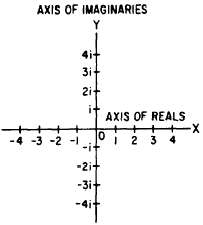That was the question answered in my Geometry class last night. Here, for your entertainment, I will produce a (non-rigorous) version of the answer.
Let's start with the idea that geometry is about congruence - which figures are congruent to each other? In Euclidean geometry, as I said yesterday, figures are congruent if you can make them line up by rotating them, moving them around, or flipping them over.
So basically, a geometry is a set (in our class so far, typically this is the complex plane - which is basically just a flat 2-dimensional space that extends infinitely) plus rules about what figures are congruent.
What types of rules pass as a geometry? Well, the basic thing is that congruence is an "equivalence relation," which means it has to satisfy these criteria:
These properties, which define an equivalence relation, are also true for common ideas like "equals" or "makes the same amount of money as" or "lives in the same city as" - basically, stuff that seems like it's related to things being equal. They aren't necessarily true for other types of relations, like "likes" (Sally likes me, and I liked David, but Sally didn't like David - liking is not transitive - and actually it's not reflexive or symmetric either) or "is bigger than" (which is transitive, but anti-symmetric and anti-reflexive).
 So, getting a bit more formal, a geometry is a set (such as the complex plane) plus a group of allowable functions on the set, where the group of allowable functions forms an equivalence relation. Since we're doing this with algebra, not by picking up pieces of paper and moving them around ala Euclid, this can be set out rigorously with...well, math. Here are some types of transformations, or functions on the complex plane:
So, getting a bit more formal, a geometry is a set (such as the complex plane) plus a group of allowable functions on the set, where the group of allowable functions forms an equivalence relation. Since we're doing this with algebra, not by picking up pieces of paper and moving them around ala Euclid, this can be set out rigorously with...well, math. Here are some types of transformations, or functions on the complex plane:
So the next part of class was investigating some combinations of these to see if they could constitute a geometry.
For instance, if your only function is reflection across the x-axis, this is not a geometry. Why? Because under that system, a figure is not congruent to itself. (It's only congruent to its reflection.)
But if you add the identity function, so that you have the identity function plus reflection across the x-axis, you have a geometry! You can formally test the properties of an equivalence relation in this case like this:
Another geometry could include only translations. Does this satisfy?
A less mathy way of saying this is to remember that translation means moving things around without rotating or flipping them. Is a figure congruent to itself? Sure - you just move it around not at all. If you can move one figure onto another, then you can surely move the other onto it instead, so it's symmetric. And if you can move figure A onto figure B, and figure B onto figure C, then you could move A onto C by just moving it onto B first, then following B's path to C, so it's transitive.
Note that all of these different geometries have different rules about, essentially, which types of figures are congruent to each other. Fun and games! (Did anyone actually finish this post?)
Let's start with the idea that geometry is about congruence - which figures are congruent to each other? In Euclidean geometry, as I said yesterday, figures are congruent if you can make them line up by rotating them, moving them around, or flipping them over.
So basically, a geometry is a set (in our class so far, typically this is the complex plane - which is basically just a flat 2-dimensional space that extends infinitely) plus rules about what figures are congruent.
What types of rules pass as a geometry? Well, the basic thing is that congruence is an "equivalence relation," which means it has to satisfy these criteria:
- A figure is always congruent to itself. [reflexivity]
- If figure A is congruent to figure B, then B is congruent to A. [symmetry]
- if figure A is congruent to figure B, and B is congruent to figure C, then A is congruent to C. [transitivity]
These properties, which define an equivalence relation, are also true for common ideas like "equals" or "makes the same amount of money as" or "lives in the same city as" - basically, stuff that seems like it's related to things being equal. They aren't necessarily true for other types of relations, like "likes" (Sally likes me, and I liked David, but Sally didn't like David - liking is not transitive - and actually it's not reflexive or symmetric either) or "is bigger than" (which is transitive, but anti-symmetric and anti-reflexive).
 So, getting a bit more formal, a geometry is a set (such as the complex plane) plus a group of allowable functions on the set, where the group of allowable functions forms an equivalence relation. Since we're doing this with algebra, not by picking up pieces of paper and moving them around ala Euclid, this can be set out rigorously with...well, math. Here are some types of transformations, or functions on the complex plane:
So, getting a bit more formal, a geometry is a set (such as the complex plane) plus a group of allowable functions on the set, where the group of allowable functions forms an equivalence relation. Since we're doing this with algebra, not by picking up pieces of paper and moving them around ala Euclid, this can be set out rigorously with...well, math. Here are some types of transformations, or functions on the complex plane:- Rotation - You can rotate around the origin (0) or around some other point.
- Translation - This means moving the plane side to side, up and down, or diagonally, without rotating it.
- Reflection - This means making the figure into a mirror image of itself across some line, such as the x-axis, or y-axis, or anywhere else you want.
- The identify function - this just maps each point to itself. It doesn't change anything.
So the next part of class was investigating some combinations of these to see if they could constitute a geometry.
For instance, if your only function is reflection across the x-axis, this is not a geometry. Why? Because under that system, a figure is not congruent to itself. (It's only congruent to its reflection.)
But if you add the identity function, so that you have the identity function plus reflection across the x-axis, you have a geometry! You can formally test the properties of an equivalence relation in this case like this:
- Reflexivity - the identify function must be included
- Symmetry - if a function f is included, it must have an inverse, and the inverse must be included.
- Transitivity - if functions f and g are included, the composition of f and g - that is f(g()) - must be included.
Another geometry could include only translations. Does this satisfy?
- Reflexivity: f(z) = z + 0 is a translation and is also the identity function. So that's good.
- Symmetry: if f(z) = z + w is a translation, then f(z) = z - w is its inverse, and is also a translation. Check!
- Transitivity: if f(z) = z + a and g(z) = z + b are translations, then f(g(z))) = z + (b + a) and that's also a translation.
A less mathy way of saying this is to remember that translation means moving things around without rotating or flipping them. Is a figure congruent to itself? Sure - you just move it around not at all. If you can move one figure onto another, then you can surely move the other onto it instead, so it's symmetric. And if you can move figure A onto figure B, and figure B onto figure C, then you could move A onto C by just moving it onto B first, then following B's path to C, so it's transitive.
Note that all of these different geometries have different rules about, essentially, which types of figures are congruent to each other. Fun and games! (Did anyone actually finish this post?)





















1 comment:
Finished it. Loved it. Stowing it away for later.
Not only is your journal not boring, it's witty and well-written. I'm loving it.
-- Ed
Post a Comment